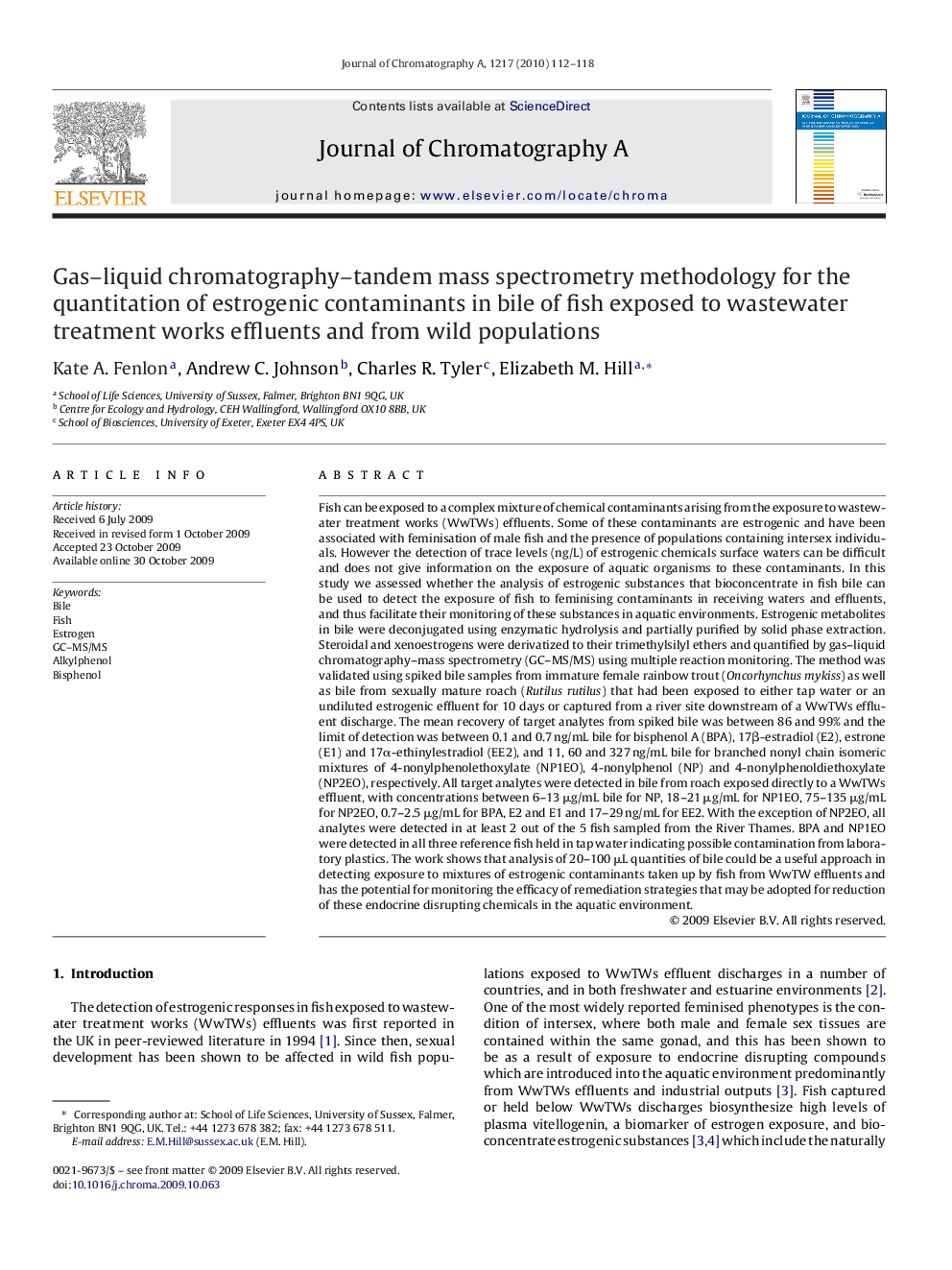| کد مقاله | کد نشریه | سال انتشار | مقاله انگلیسی | نسخه تمام متن |
|---|---|---|---|---|
| 1204378 | 965151 | 2010 | 7 صفحه PDF | دانلود رایگان |

Fish can be exposed to a complex mixture of chemical contaminants arising from the exposure to wastewater treatment works (WwTWs) effluents. Some of these contaminants are estrogenic and have been associated with feminisation of male fish and the presence of populations containing intersex individuals. However the detection of trace levels (ng/L) of estrogenic chemicals surface waters can be difficult and does not give information on the exposure of aquatic organisms to these contaminants. In this study we assessed whether the analysis of estrogenic substances that bioconcentrate in fish bile can be used to detect the exposure of fish to feminising contaminants in receiving waters and effluents, and thus facilitate their monitoring of these substances in aquatic environments. Estrogenic metabolites in bile were deconjugated using enzymatic hydrolysis and partially purified by solid phase extraction. Steroidal and xenoestrogens were derivatized to their trimethylsilyl ethers and quantified by gas–liquid chromatography–mass spectrometry (GC–MS/MS) using multiple reaction monitoring. The method was validated using spiked bile samples from immature female rainbow trout (Oncorhynchus mykiss) as well as bile from sexually mature roach (Rutilus rutilus) that had been exposed to either tap water or an undiluted estrogenic effluent for 10 days or captured from a river site downstream of a WwTWs effluent discharge. The mean recovery of target analytes from spiked bile was between 86 and 99% and the limit of detection was between 0.1 and 0.7 ng/mL bile for bisphenol A (BPA), 17β-estradiol (E2), estrone (E1) and 17α-ethinylestradiol (EE2), and 11, 60 and 327 ng/mL bile for branched nonyl chain isomeric mixtures of 4-nonylphenolethoxylate (NP1EO), 4-nonylphenol (NP) and 4-nonylphenoldiethoxylate (NP2EO), respectively. All target analytes were detected in bile from roach exposed directly to a WwTWs effluent, with concentrations between 6–13 μg/mL bile for NP, 18–21 μg/mL for NP1EO, 75–135 μg/mL for NP2EO, 0.7–2.5 μg/mL for BPA, E2 and E1 and 17–29 ng/mL for EE2. With the exception of NP2EO, all analytes were detected in at least 2 out of the 5 fish sampled from the River Thames. BPA and NP1EO were detected in all three reference fish held in tap water indicating possible contamination from laboratory plastics. The work shows that analysis of 20–100 μL quantities of bile could be a useful approach in detecting exposure to mixtures of estrogenic contaminants taken up by fish from WwTW effluents and has the potential for monitoring the efficacy of remediation strategies that may be adopted for reduction of these endocrine disrupting chemicals in the aquatic environment.
Journal: Journal of Chromatography A - Volume 1217, Issue 1, 1 January 2010, Pages 112–118